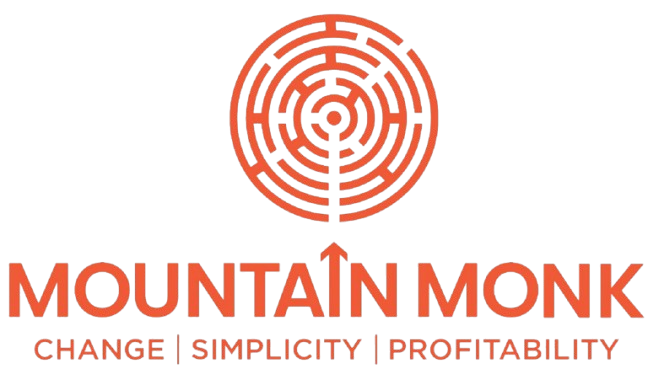Case Study: Restoring a Family-Owned Retail Business through Data-Driven Transformation
A family retail business organization functioning in a competitive industry was under pressure to sustain its market standing. Some of the problems the company had were things like — old business models, ineffective processes, and little or no focus on customers.
Business Objectives
- Increased operating efficiency
- Optimized supply chain management to reduce costs and cycle time with a general focus on the supply chain.
- Optimized inventory management: By utilizing data analytics, quantity demand for various products is well predicted so as to prevent the outcome of having too much stock or else running low stages.
- Modernized IT infrastructure with the help of advanced information systems to enhanced data management, as well as to integrate effective technologies to operations systems.
- Improved Customer Experience
- Personalized customer interactions: Integrated data analytics to base the customer-engagement activities on highly effective and relevant metrics that would appeal to customers.
- Enhanced customer service: Ensured team to treat the customers right in areas like telephone, email and social/marketing networks.
- Created loyalty programs: Loyal customers should be given special incentives to come back to make their purchases with the store which helped in revenue growth.
- Gathered customer feedback: We used surveys and social media to ensure that customers offer their opinions about how the company can improve.
- Drive Sales Growth
- Expanded market reach: Diversified their areas of operation to attract more customers for their products.
- Developed new products and services as there is always need to adapt to new challenges presented by customers in a growing market.
- Leveraged digital marketing: Marketing through digital platforms for a larger market and making a sale online.
- Optimized pricing strategies: With Market analysis, it helped to select the right price for the products in order to maximize the revenues and profitability of the brand.
- Customized Business Model
- Digital transformation: Integrated technology into processes in order to increase efficiency, fulfill customers’ expectations and encourage innovation.
- Foster a culture of innovation: Emphasized innovation in our approach to create novel goods, services, and ways of reaching new customers.
- Built strategic partnerships: Partnered with local delivery, packaging, 3D modeling businesses in order to increase demand for goods and services and gain new sources of supply.
- Stay updated on industry trends: Analyse the condition in industries and then plan appropriate changes that need to be made in the organization.
- Our Strategic Management Consulting Approach
Mountain Monk Consulting followed and implemented an extensive strategic process to solve our client’s problems and fulfil their goals. The approach included:
- In-Depth Assessment
- Porter’s Five Forces Analysis: Conducted a detailed analysis of the client’s industry using Porter’s Five Forces framework to assess competitive intensity, bargaining power of buyers and suppliers, threat of new entrants, and threat of substitute products.
- Competitive Analysis: Analyzed competitors and their advantage, disadvantage, market share and their strategies.
- Market Research: Carried out market analysis to understand the trends, customers and other opportunities in the market.
- Value Chain Analysis:
Conducted an analysis of the client’s value chain with the view of discovering the areas that needed improvement and timely minimization of costs.
- Strategic Value Creation
- Vision and Mission Development: Assisted the client in setting up a vision and mission statement that was both simple and motivating and served to steer the strategies of the company.
- Goal Setting: Developed clear and realistic objectives that met the long-term plan and vision of the company.
- Strategic Roadmap: We created a comprehensive strategic plan, which identified the major activities and tangible objectives necessary to accomplish these objectives.
- Data-Driven Insights
- Data Collection and Analysis: Sales data, customer feedback, market trends and operations were compiled and evaluated to make analysis.
- Advanced Analytics: Applied technical tools including, prediction, categorization, and churn rate analysis.
- Dashboard Development: Built responsive analysis maps for managing profits and analyzing indicators and outcomes and performance of all stores at single view.
- Customer-Centric Strategy
- Customer Journey Mapping: Customer journey was created and analyzed with the aim of finding out the key areas of customer suffering and good potential spots.
- Customer Feedback Analysis: Analyzed information derived from the evaluation of customers’ needs, wants and perceptions of services offered.
- Personalized Experiences: Worked out approaches to customize the appeal to the target and specific customer needs.
- Operational Optimization
- Process Reengineering: Indeed, inefficiencies were first recognized and then optimized to accelerate productivity enhancement while decreasing cost.
- Technology Optimization: Assessed current technology resources and provided suggestions and changes that should be made to achieve optimal performance.
- Key Strategies Implemented
- Centralized Data : A centralized data had been set and this helped to pulled all store data from any store and provide a centralized view of the business realities.
- Customer Segmentation: Thus the splitting of the customers used this advanced analytical methods of separating the customers by their demographical profile, buying habits and tendencies.
- Personalized Marketing: Electronic marketing communication was undertaken to direct market to specific segments with specific offers and promotions with the help of personal mails and social media posts with special offers and in the stores.
- Inventory Optimization: Supply chain management strategies such as demand forecasting and inventory management strategies were utilized in a manner that would enhance the volumes of stocks to be used, the volumes of wastes being generated as well as overall profitability.
- Omnichannel Strategy: Omnichannel strategy was used whereby both online and physical mode of selling was used to ensure the consumer embrace the products. This involved developing an e-commerce store to offer digital purchase, let customers pick goods that they bought online for pickup, and provide customers with the same rewards regardless of how they shop.
- Employee Training and Development: We also emphasized on employee training and development in order to guarantee that the team was well equipped with knowledge able to support the transformation.
Results and Impact
- Significant Revenue Growth: These analytical techniques resulted with 37% increase in the revenues within one year.
- Improved Customer Satisfaction: Improved customer engagement and attention meant that businesses saw their customer satisfaction ratings climb by 20%.
- Enhanced Operational Efficiency: Sustained process improvement and productivity enhancement activities that contributed to operating expense cuts equated to 15% of the total value.
- Successful Omnichannel Integration: The omnichannel strategy ensured that it covered a wider market hence more sales than when it operated under a single channel.
- Strengthened Competitive Position: The restructured form changed the business to align the company to its rivals so that it could meet the strategic management goals and objectives of the company and become a market giant geared towards competing with the giants in the marketplace.
Conclusion
By leveraging data-driven insights, adopting a customer-centric approach, and implementing strategic management best practices, we successfully transformed the business and achieved sustainable growth. This case study demonstrates the power of strategic consulting in helping businesses overcome challenges and achieve their objectives and how DATA Analytics plays an important aspect with retails industry.





